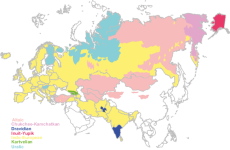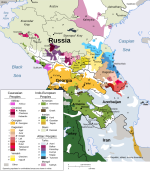Joe Shearer
INT'L MOD
- Apr 19, 2009
- 31,945
- 48,743
- Country of Origin

- Country of Residence

The Indian situation has two points of interest.Looking into neolithic Europe is also quite interesting as to its original native languages before the Yamnaya arc (the Yamnaya being related to the Andronovo and Sintashta that would come after them further east in steppe, being the indo-european bridge we see today from Europe, Iran and Indian subcontinent).
If you have time the Minoans are very interesting to read about (they were likely one of the last "Pelasgian" languages i.e pre-Greek in the Greek region pre-bronze age collapse due to Crete holding some degree of insularity relative to the mainland).
Along with the Etruscan (and other italic + central european tribes too) that seem to have been remote/insular enough within the Italian appenines to hold sufficient pre-indo european language retention till Roman (Latin) domination much later in iron age.
The only remnant of pre-indo european in Europe is very likely just Basque now. There are substrate that persist in various languages (i.e their peculiar absorption from pre-existing languages) that can be linguistically studied by modelling deducing from our construction of proto-Indo European relative to the languages vocabulary downstream that doesn't jive. A very interesting field of work.
Here is a reply I posted in a whatsapp group some time back:
@Joe Shearer
First, the language isolate Burashaski from Kashmir and Gilgit. This, and Toda, are language isolates that have no known links to any language family; for that matter to any other language.
Second is the layering of languages . While the current, and uppermost, layer is Indo-Aryan descended, the immediately visible sub-stratum is a form of Dravidian, whose traces are possible to identify in contemporary languages as they exist, and even in north India. Dravidian languages, Tamil, Telugu, Kannada, Malayalam (counting it as a separate language in spite of it having divided itself from neighbouring Tamil within historical memory), Tulu, are still in very popular use, even flourishing vigorously.
The shocking thing is that Parpola proposes even a third sub-stratum, from a language that has not been fully reconstructed itself, lying around and below the Austra-Asiatic sub-strate.
Last edited:








